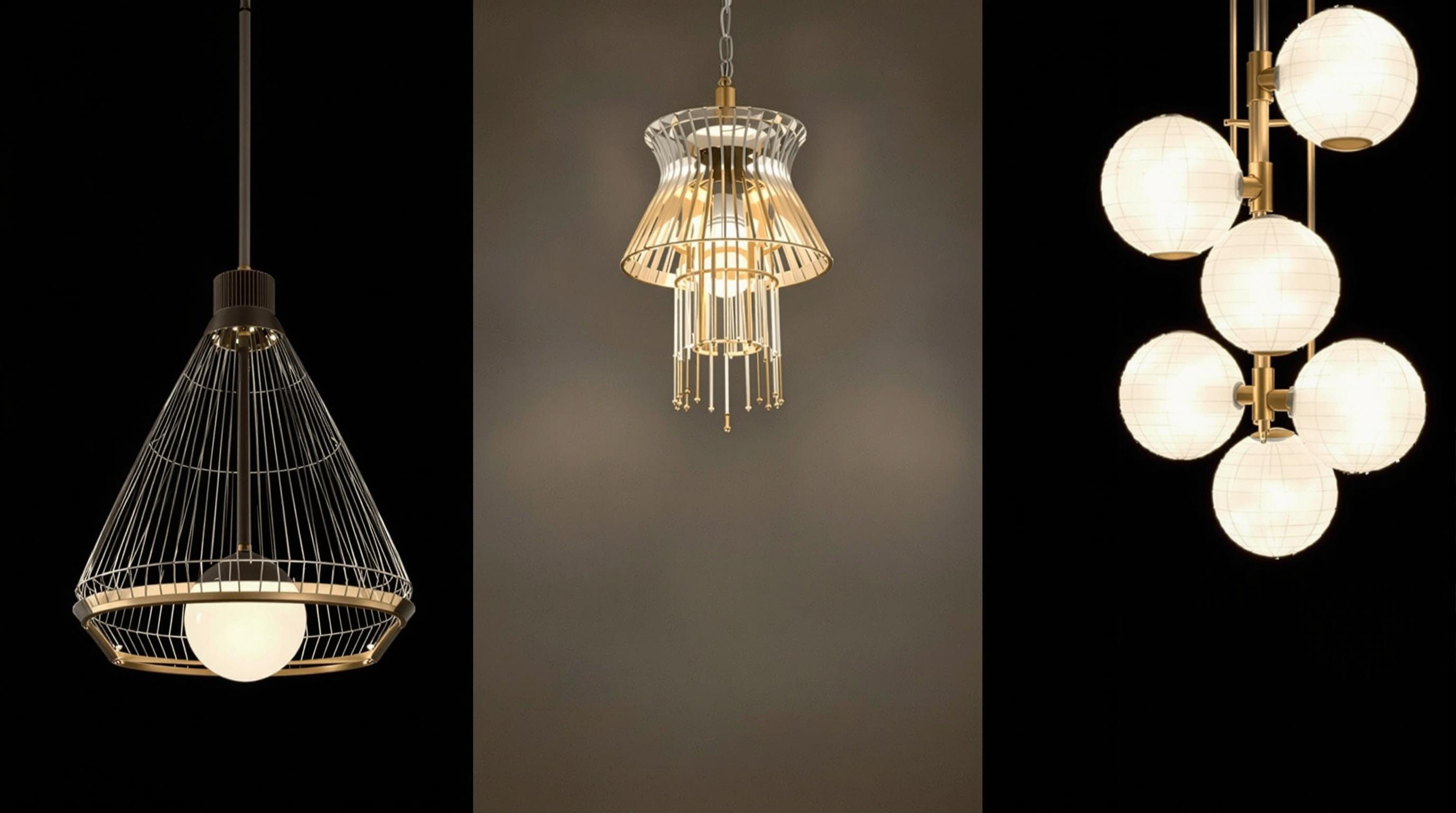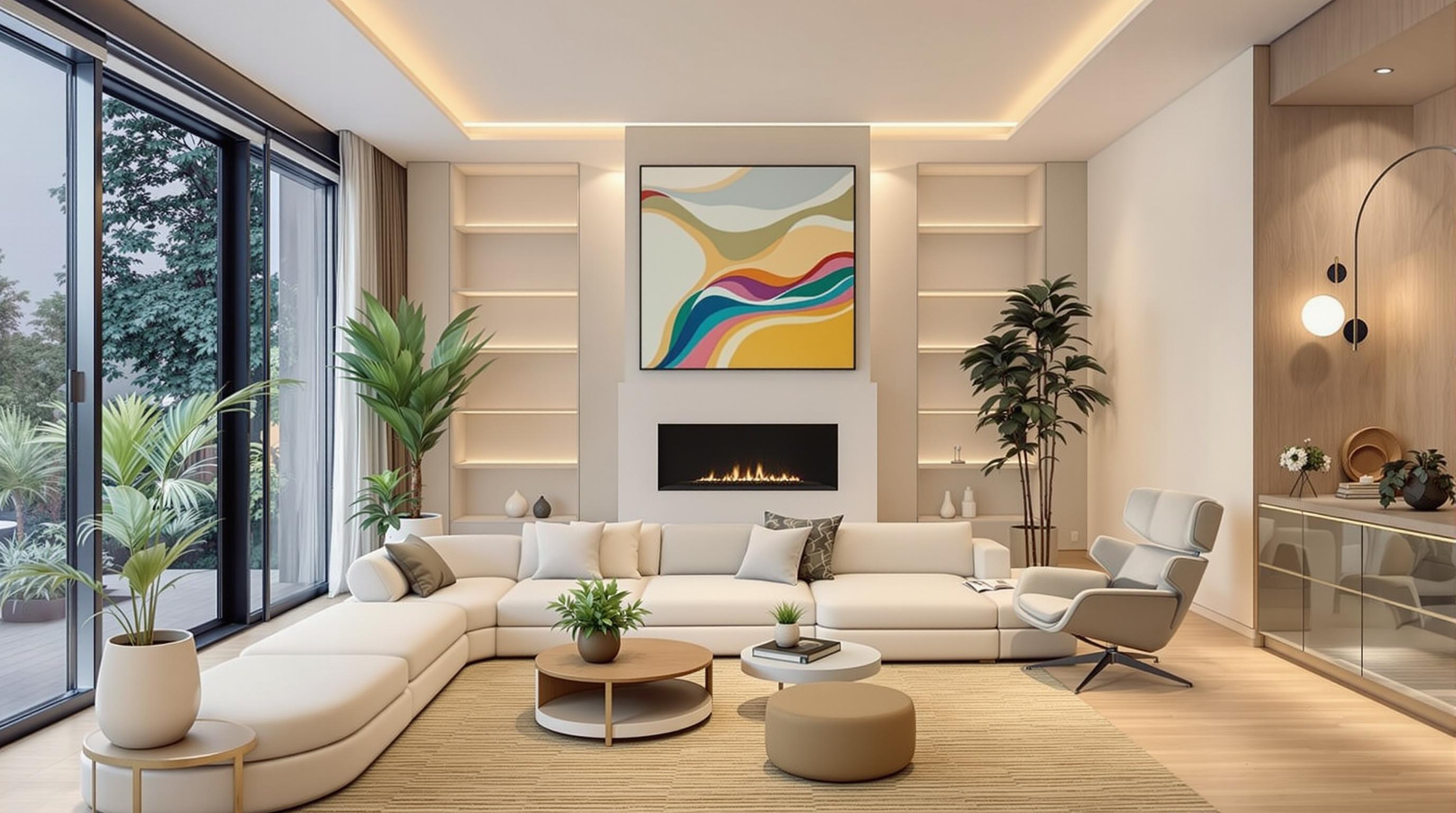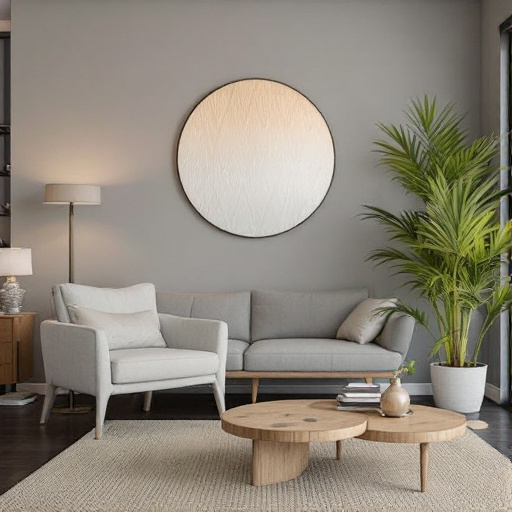Featured Articles
- 8 Innovative Home Decor Trends Shaping Sustainable Luxury Living in 2024
- "Beyond Minimalism: Embracing the Chaos With Maximalist Decor in Modern Homes"
- "Feng Shui Meets Minimalism: The Surprising Blend That's Transforming Modern Home Spaces"
- Forgotten Corners: How Nooks and Crannies Are Revolutionizing Modern Home Decor Trends
- Reviving the Past: How Vintage Office Decor is Making a Comeback in Modern Homes
The Surprising Rise of Anti-Decor: Embracing Chaos Over Aesthetics in Modern Home Design
The Surprising Rise of Anti-Decor: Embracing Chaos Over Aesthetics in Modern Home Design
The rise of anti-decor in modern home design highlights a growing trend where individuals are choosing chaotic, unrefined aesthetics over polished perfection. As social media, personal expression, and sustainability reshape our view of interior spaces, we’re embracing a more genuine, sometimes messier, reflection of who we are.
The Fast-Paced World of Design
In today's fast-paced world, the pursuit of perfection can be exhausting. Enter the concept of anti-decor: a rebellion against the sterile, meticulously curated spaces that have dominated the design scene for years. Instead, we find ourselves gravitating towards homes that feel lived-in, chaotic, and uniquely personal. According to a recent survey by the National Association of Home Builders, over 45% of millennials prefer homes that reflect individual personality rather than mainstream trends (NAHB, 2023).
A Conversation Between Generations
Imagine sitting down with your grandmother, who meticulously decorated every nook of her home to replicate that iconic 1950s charm. She proudly displays her lace doilies, vintage knick-knacks, and matching couches. Now picture your own space: a cluttered student’s room with mismatched furniture, art plastered on the walls from various friends, and a stack of books on the floor that could rival a small library.
Generationally, we see a divide forming. While the previous generations valued consistency and refined aesthetics, many young people today find beauty in imperfection. This embrace of eclecticism has sparked not just a decorating style but also a way of thinking about self-identity and space. The collision of traditions brings about an interesting dialogue, where anti-decor represents a fresh outlook on lifestyle choices centered around authenticity and freedom.
Messy Homes, Happy Minds?
There's something genuinely invigorating about letting go of the need for constant order. A study published in the Journal of Environmental Psychology found that individuals with a more chaotic environment actually exhibit greater creativity than those in structured settings (Newman & Lawrence, 2022). For instance, artist home studios are often colorful, cluttered spaces filled with brushes, paints, and half-finished projects. Instead of being viewed as messy, they’re celebrated as part of the artistic journey. When your home becomes a backdrop to your life’s creativity, every item tells a story rather than being tucked away in a closet.
Living with Intention
How does one truly embrace anti-decor without losing their mind? The key lies in intentionality. Instead of adopting an aesthetic purely for appearances, we seek spaces that reflect our habits, passions, and daily routines. Take the plant enthusiast who collects houseplants from various thrift stores; each plant has a personality, a history, and an element of chaos as it fights for sunlight. So what if the plant collection spills over onto the kitchen counter? It’s a reminder of her devotion and love for living things.
Case Study: The Rise of the 'Wabi-Sabi' Aesthetic
A perfect exemplification of anti-decor is the Japanese principle of wabi-sabi, which finds beauty in imperfection and impermanence. Wabi-sabi embraces the organic and the unrefined, highlighting the authenticity of age and wear. This philosophy has transcended Japanese culture, influencing Western designers and homeowners alike. You may find this reflected in the popularity of reclaimed wood furniture, handmade ceramics, or the infamous “distressed” look.
A Political Statement?
Believe it or not, the anti-decor movement carries a significant political statement—one against consumerism and the fast-fashion industry, which often pressures homeowners to constantly update their spaces. Artists and designers like Eva Zeisel took inspiration from anti-decor principles, crafting pieces that showcase individuality rather than following fleeting trends. The idea of reusing and repurposing every-day items becomes a conversation about sustainability, urging us to rethink our first instincts when it comes to home styling.
The Eclectic Renaissance
The eclectic, chaotic styles we see emerging today could be likened to a renaissance. In the same way that the Renaissance deviated from the norms of medieval art, today's designers and decorators are challenging traditional concepts of beauty. It’s about layering textures, colors, and patterns that seem mismatched but become cohesive in their randomness.
When Starbucks can have a “local coffee shop” vibe with quirky furniture collected from various garage sales, it’s a sign that even major corporations are catching on. People crave authenticity in social spaces. Whether it’s a café, a bar, or one’s home, it’s increasingly apparent that we prefer the charm of the unpredictable.
The Humor in Chaos
Let’s talk about the humorous side of chaos! Ever tried to navigate a space filled with eclectic decor? You might find yourself chuckling at a painting of a cat dressed as Elvis next to a vintage typewriter. It’s delightful and ridiculous all at once. This playful atmosphere fosters conversations and curiosity that a strictly decorated room might suppress. It encourages visitors to engage with your space with laughter, pulling them into your world where chaos reigns supreme!
The Challenges of Anti-Decor
However, embracing the anti-decor lifestyle isn't without its challenges. For one, it requires navigating the fine line between creative chaos and flat-out disarray. Some people may find it hard to step back and see the beauty when they constantly trip over a pair of shoes or navigate around unwashed laundry. Finding that balance often takes practice, patience, and a great deal of introspection.
Additionally, while the anti-decor movement thrives on individual expression, it can sometimes lead to decision fatigue. With so many options, mixing and matching can become overwhelming. But hey, that’s part of the process! It’s an adventure to discover which pieces ignite joy, and as Marie Kondo suggests, evaluate everything in your home based on whether it sparks happiness—not adherence to a societal standard.
The Final Flourish
In a world that often prioritizes conformity and flawless aesthetics, the rise of anti-decor has ushered in a refreshing challenge. Allow your home to breathe and reflect the delightful chaos of your life. In embracing the imperfections and eccentricities, we celebrate the narratives our spaces hold. So kick back, toss aside the preconceived notions of what a “perfect” home should be, and allow yourself to indulge in the delightful messiness of anti-decor.
The beauty of this movement is that it invites everyone—whether 16 or 70—to engage in playful creativity. So, roll up your sleeves, dive into the wonderful chaos, and let your personality shine through in every corner of your home!




